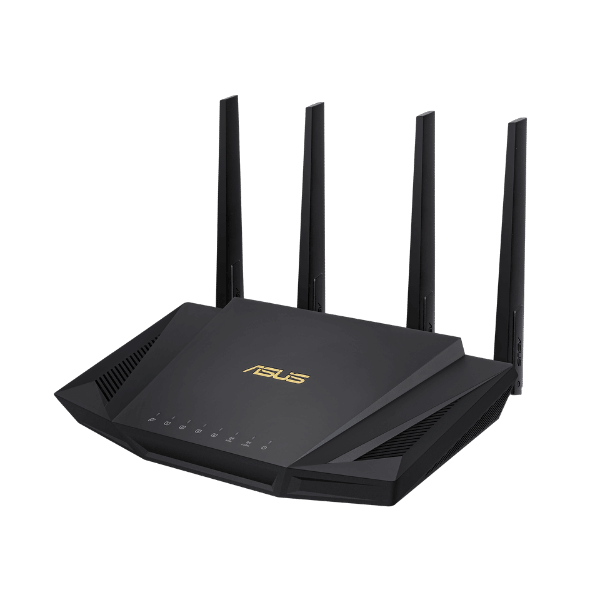Are you a Google Fiber customer looking to upgrade your router? You’re in the right place!

I’ve selected a handful of routers that you can use to upgrade from the standard Google Fiber router. I’ve been able to do this after reviewing tons of routers with the Networks Hardware team.
After crunching the data, I’ve picked the ASUS RT-AX3000 as my number one pic. It has a lot of exciting features and good performance for a reasonable price.
Editor’s Choice – ASUS RT-AX3000
Best Overall
- Recommend for: Google Fiber 1 Gig
- Tested max speed: 889.41 Mbps
- Approximate range: 80-85 ft
- Wireless standard: Wi-Fi 6
- Warranty: Two years
If you have a super fast Google Fiber plan or a large home, it may not be ideal though. I’ve picked a handful of extra options for your consideration in these circumstances and more for that reason.
Let’s go!
Top 7 Google Fiber Routers
Check below for my top seven and the category they’re best for.
- Best overall router: ASUS RT-AX3000
- Best for budgets: TP-Link Archer A8
- Best for 2 Gig: Netgear Nighthawk RAXE500
- Best Mesh system: ASUS ZenWiFi AX AX6600
- Best budget Mesh system: TP-Link Deco X20
- Another recommended budget router option: TP-Link Archer AX21
- Best for Google Home compatibility: Google Nest Wi-Fi
Best Routers for Google Fiber
Next, we’re going to take a closer look at how those decisions were made.
#1 Best Overall Router – ASUS RT-AX3000
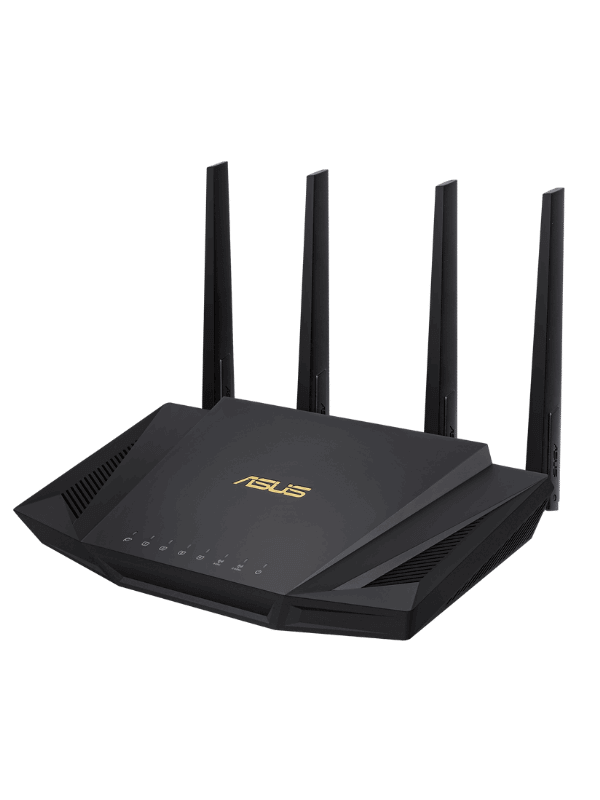
- Recommend for: Google Fiber 1 Gig
- Tested max speed: 889.41 Mbps
- Approximate range: 80-85 ft
- Wireless standard: Wi-Fi 6
- Warranty: Two years
Pros
- Super fast
- Good price
- Fantastic features
Cons
- Mediocre range
- No multi-gig ports
The best router in terms of value for money has to be the ASUS RT-AX3000. For a reasonable price, you’re going to get an incredible top speed and tons of fantastic features.
Let’s start with that speed. We ran a download speed test from 5 ft away using a Wi-Fi 6 device and managed to clock in an enormous 889.41 Mbps. That makes it substantially faster than some far more expensive routers.
This would make it suitable for the Google Fiber 1 Gig plan easily. It’d even work fairly well on the 2 Gig plan if you’re sharing the network with a few people at the same time. Plus, it would be a really good option for all the gamers out there!
Perhaps the only downside of this router is that it’s lacking range. You won’t be able to hold a connection for much further than about 80-85 ft.
You will be able to extend the range seamlessly with AiMesh though. This tool allows you to add Mesh satellites that connect to the same network.
That’s just one of the awesome features you can take advantage of. Another classic is AiProtection Pro, a service you get free for life. It’s a bundle of antivirus and parental controls that will keep your network safe as well as any kids using it.
There’s also Adaptive QoS. It lets you assign profiles to devices, such as ‘gaming’ to make sure that those devices perform the best for the activity they’ve been assigned.
And all that for a reasonable price. This is a fantastic value option for Google Fiber customers.
#2 Best For Budgets – TP-Link Archer A8
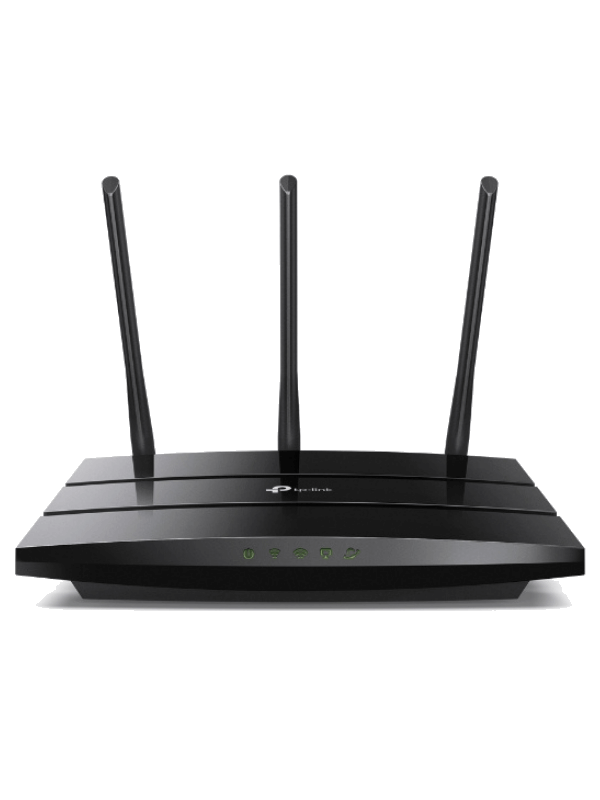
- Recommend for: Google Fiber 1 Gig
- Tested max speed: 492.69 Mbps
- Approximate range: 80-90 ft
- Wireless standard: Wi-Fi 5
- Warranty: Limited lifetime
Pros
- Very affordable
- Mesh compatibility
- Fair speed for a budget router
Cons
- Only Wi-Fi 5
If you want to save some money on your next router, you can do that with the TP-Link Archer A8. However, you won’t be able to max out either of the Google Fiber plans.
The top speed we managed to measure with it was 492.69 Mbps. That’s not too bad considering that this is only a Wi-Fi 5 router instead of a Wi-Fi 6 one.
This is still going to be more than enough speed for a lot of families, and that’s why it’s in our recommendations.
Wi-Fi is an older technology that helps to bring the price down but it won’t ever be able to reach the faster speeds of the newer Wi-Fi 6 technology.
Archer A8’s range is reasonable at 80-90 ft though. This would be enough for a medium-sized home and interestingly, you can extend the range seamlessly with Mesh thanks to the addition of the OneMesh feature. This is rare for a budget router!
When it comes to other features, things are pretty limited but there’s still a fair selection considering the price category. You’ll still get QoS and parental controls but at their most basic functionality.
If you’re on a budget and not worried about extensive features or unlocking the top speed of your Google Fiber plan, the A8 could well be the right option for you.
#3 Best For Google Fiber 2 Gig – Netgear Nighthawk RAXE500

- Recommend for: Any Google Fiber plan
- Tested max speed: 1203.59 Mbps
- Approximate range: 100-110 ft
- Wireless standard: Wi-Fi 6e
- Warranty: One year
Pros
- Very fast
- Multi gig port
- Great range
Cons
- Expensive
- No QoS
The awesome-looking Netgear Nighthawk RAXE500 is one of the fastest routers on the market right now. That’s why I recommend it for the fastest Google Fiber plan of 2 Gbps.
Over Wi-Fi, we recorded a huge top speed of 1203.59 Mbps. It’s not going to get much faster than that over Wi-Fi. This would be a good speed for a medium-sized business, let alone any domestic environment. And, it would be an incredible option for games of any level.
The reason for this immense speed is that this router features the latest Wi-Fi technology, Wi-Fi 6e. The only downside to that is that the devices that support it are quite limited at the moment. You’ll only be able to do so with a few smartphones, for example, including the Google Pixel 6.
If you want to hit the top speed of your Fiber 2 Gig plan, you can do so with a wired connection. That’s because the RAXE500 comes with a multi gig port, allowing for speeds of up to 2.5 Gbps when plugged in via ethernet.
If you’re looking to supply the internet to a large home or office, you can do that. The organic range of this router is around 100-110 ft and you can boost it even further thanks to Mesh support.
Strangely, there’s no QoS with this router. You won’t be able to select any priority devices to maximize their speed over Wi-Fi here.
If you want advanced parental controls and antivirus technology, you’ll need to subscribe to Netgear Armor at a cost of $99.99 per year. That’s a little expensive, but I still think it’s worth it. Plus, you get it free for a year with this router.
Another slight downside to this router is the price. Of course it’s going to be expensive with this much performance but I encourage people to think about whether they really need this kind of speed before they buy the Nighthawk.
Other than that, the Nighthawk is an awesome piece of technology. It’s one of the only routers I’d recommend for the Google Fiber 2 Gig plan.
#4 Best Mesh System – ASUS ZenWiFi AX AX6600
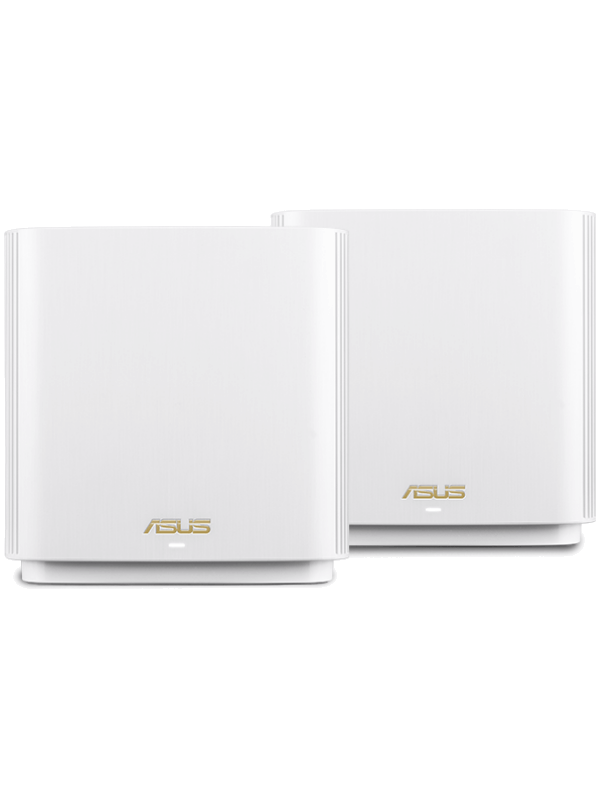
- Recommend for: Google Fiber 1 Gig
- Tested max speed: 836.45 Mbps
- Approximate range: 100 ft per satellite
- Wireless standard: Wi-Fi 6
- Warranty: Two years
Pros
- Backhaul band for better satellite connections
- Fast Mesh system
- Very good features
Cons
- Expensive
- Slower on 2.4 GHz band
If your home (or office) is over 3000 sq ft in size then you should really be considering Mesh. And if you’re considering Mesh, you should really be considering the ASUS ZenWiFi AX AX6600 for your Google Fiber 1 Gig plan.
I recommend it for this plan as the top speed is very fast. We recorded a speed of 836.45 Mbps at one point, which is really impressive for a Mesh system. Your whole family could use the internet intensively at this speed.
The range of each satellite is pretty good at around 100 ft. The benefit of this is that you may end up having to buy fewer satellites overall as you can keep them further apart.
Plus, this Mesh kit is a tri-band system. It contains a second 5 GHz band which is used as a ‘backhaul’ band to improve the communications between the satellites. As such, you’ll still get good speeds when you have a lot of satellites in your Mesh setup.
Another feature of this second 5 GHz band is that it frees up bandwidth for when you have a lot of smart devices connected. This means you’ll get a higher average speed for them.
This Mesh kit comes with all the good features we know and love from ASUS. For a start, there’s AiProtection Pro. This is free advanced parental controls and antivirus technology.
Finally, there’s Adaptive QoS that can be used to prioritize connected devices by assigning them to profiles.
AX6600 is a near perfect Mesh system. It’s a little pricey but for what you get, it offers good value for money. A brilliant option for large homeowners on the Google Fiber 1 Gig plan.
#5 Best budget Mesh system: TP-Link Deco X20
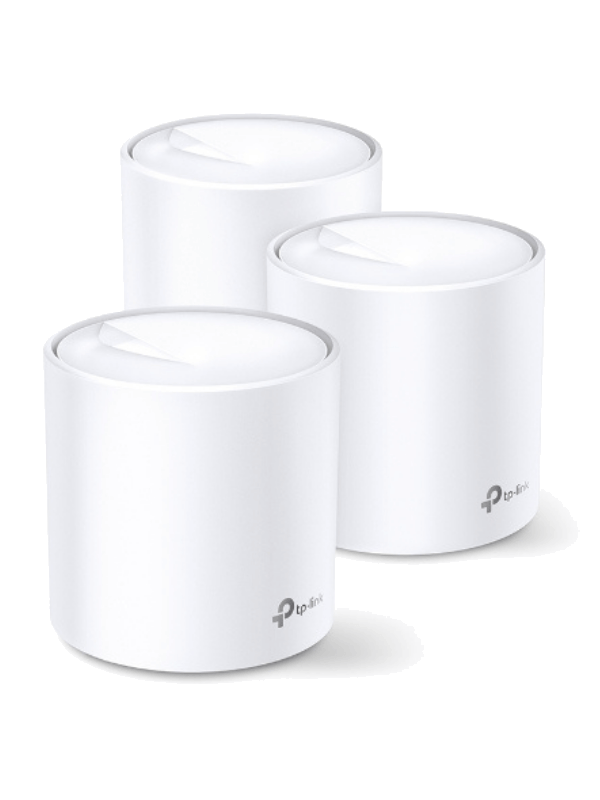
- Recommend for: Google Fiber 1 Gig
- Tested max speed: 695.05 Mbps
- Approximate range: 100 ft
- Wireless standard: Wi-Fi 6
- Warranty: Two years
Pros
- Good price for Mesh
- Strong signal range
- HomeCare comes free
Cons
- No backhaul band
- Slower on 2.4 GHz band
You don’t have to break the bank with Mesh, as TP-Link has proved with the Deco X20. It’s affordable but it still has a lot of things to like about it.
For a start, it’s Wi-Fi 6. Part of the benefit of this is that the speed is pretty good. We found it to top out at 695.05 Mbps.
Of course, you won’t be able to max out your Google Fiber 1 Gig plan with this but you’ll still get the most out of it with a few connected devices. It should also still be enough speed for a handful of gamers to play online at the same time.
And the range of each satellite isn’t bad either. You should still get a connection as far as 100 ft away.
The X20 isn’t going to be an ideal option for those who a) have a lot of smart devices to connect or b) want to add a lot of satellites. This is because there is no backhaul band (this is a dual-band setup) and the performance on the 2.4 GHz band is a little slow.
It does come with some great features. For example, HomeCare comes free for life. This is parental controls and antivirus. They’re not quite as strong as the premium TP-Link offering but they’ll still work well to keep your network safe and any young children using it.
You’ll also get QoS with this router but it’s quite limited. Nonetheless, priority devices can be selected for a boost in performance.
So the only real downside to this sweet and simple Mesh kit that comes in at a good price is the performance with many satellites or smart devices. It’s a good option for large home Google Fiber customers wanting to keep the price down a little.
#6 Another recommended budget router option – TP-Link Archer AX21
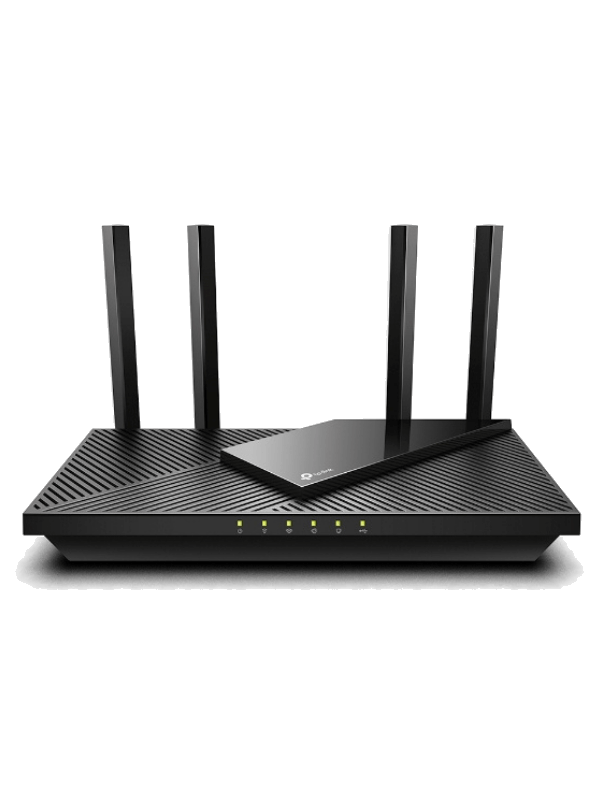
- Recommend for: Google Fiber 1 Gig
- Tested max speed: 675.08 Mbps
- Approximate range: 90-100 ft
- Wireless standard: Wi-Fi 6
- Warranty: Limited lifetime
Pros
- WPA3 encryption
- Affordable Wi-Fi 6
- Great range
Cons
- Speed for price is not perfect
Want to keep the cost down but go faster than the A8 and/or future proof yourself with Wi-Fi 6? One of the most affordable options for you will be the TP-Link Archer AX21.
The top speed we managed to achieve was 675.08 Mbps. This is a little slower than some other similarly-priced routers but it’s still going to be enough for any family. And, you’ll be able to get the most out of your Google Fiber 1 Gig plan if you connect up a few devices.
An impressive element of the AX21’s performance is the range, which we found to be around 90-100 ft. That’s going to be enough for a fairly large home, and it beats most other routers in the budget category.
If you do want to extend the range seamlessly, you can do thanks to OneMesh. However, adding Mesh satellites is definitely going to take it out of the budget category.
Another cool thing about this router is that it comes with WPA3 encryption, which is rare for a budget router. This means you’ll get the latest and greatest security to keep your personal data safe from outside threats.
Other features include QoS and parental controls. These are a little better than those of the A7 in that they have slightly better functions.
It also has its security upgraded to WPA3 encryption, meaning you’ll get the best protection for your personal data.
As an all-rounder, the AX21 is really impressive and it comes for a good price.
#7 Best for Google Home Compatibility – Google Nest Wi-Fi

- Recommend for: Google Fiber 1 Gig
- Tested max speed: 87.76 Mbps
- Approximate range: 80 ft per satellite
- Wireless standard: Wi-Fi 5
- Warranty: Two years
Pros
- Great smart home integration
- Awesome software and hardware
- Every satellite is a smart speaker
Cons
- Won’t get close to the plan top speed
If you’re on a Google Fiber plan, you could double down on Google and opt for their Mesh system as well. It’s called Google Nest Wi-Fi and it offers something different from the Mesh systems we’ve looked at today so far.
The key issue with this Mesh system is that it’s lacking in speed. We only managed to record a top speed of 87.76 Mbps with it. Of course, this means you’re going to get nowhere near the top speed.
All hope is not lost though. We found that it connects with multiple devices well, so if you have a lot of connected devices, you could still get the most out of your plan.
It’d be enough for one or two solid gaming sessions as well. Plus the range of each satellite is fair. We found it to be around 80 ft.
The reason for the lack of speed is that Google Nest Wi-Fi is Wi-Fi 5. Hopefully, they’ll bring out a Wi-Fi 6 system soon, and then it might be able to rise further through our rankings.
However, the key benefits of this system lie outside of its performance. Firstly, the software is incredible. It’s powered by the Google Home app which we think is one of the best out there.
As such, it integrates really well with smart devices. If you want to set up your home as an Internet of Things home, this is going to be a great option for you. Google Home allows control over a lot of apps and it’s really easy to navigate them alongside your network with it.
Also, the design of each satellite is beautiful. They’ll look great around the home, and each satellite doubles up as a (pretty good) smart speaker so you can play music all around the house.
So, Google Nest Wi-Fi rules out those looking for a lot of speed but if you want to go down the smart home route and you’re a big Google fan then it’s still definitely worth a look at.
Google Fiber Router Buying Guide
Check out below for more info on what to consider when you buy a Google Fiber router.
By the way, you can find out more on the matter by referring to our ultimate router buying guide.
The top speed of the router
You’re probably going to want to get as close as you can to the top speed of your Google Fiber plan. Or, at least change your plan if you’re paying for the 2 Gig plan but using a router with a top speed of 1 Gig or less.
Here’s a quick look at the Google Fiber plans and the required Wi-Fi standard, DOCSIS and channels for reference. I’ll explain a little more about what those things mean shortly.
| Google Fiber Plan | Wi-Fi Standard |
| 1 Gig (1000 Mbps) | Wi-Fi 6 or 6e |
| 2 Gig (2000 Mbps) | Wi-Fi 6 or 6e |
Most people are going to get more than enough speed from the 1 Gig plan. I generally only recommend the 2 Gig plan to business users, and medium or large businesses at that.
Wi-Fi 5 vs Wi-Fi 6 vs Wi-Fi 6e
Most Google Fiber customers are going to want to get a Wi-Fi 6 or a Wi-Fi 6e router. These are the only two Wi-Fi technologies that will give you a chance of hitting the top speed of your Google Fiber plan.
Wi-Fi 5 is an older technology that’s just going to be too slow to get close to the 1 Gig mark. However, you can save a lot of money if you choose to go down the Wi-Fi 6 route.
The main benefit of Wi-Fi 5 is that it will save you money. It comes on older routers that tend to be cheaper, so if you’re on a budget and not worried about maxing out your plan speed then this could still be worth taking a look at.
Be wary about Wi-Fi 6e though. Only a handful of devices will be able to support this next level of speed right now as it’s quite a new technology. For example, only some smartphones can and none of them are iPhones. Plus, Wi-Fi 6e routers can be very expensive right now.
When it comes to gaming, Wi-Fi 6 should be enough for most people but you might need Wi-Fi 6e for the next level experience or if you’re gaming alongside a few people.
Wi-Fi 5 benefits
- More affordable
- Lots of choice
Wi-Fi 6 benefits
- Pretty quick
- Good features
Wi-Fi 6e benefits
- Lightning fast
- Tri-band by nature
Mesh kits or standard routers
I recommend opting for Mesh for anyone who has a home or office of 3000 sq ft or over. This is the optimum amount of space for it to have its best effect.
Mesh is an awesome piece of technology that allows you to extend the range of your home network by adding Mesh satellites instead of standard Wi-Fi extenders.
These extra satellites connect to the same network name as the standard router. This means you’ll never have to reconnect to a new network name as you move around the home.
As such, you can take advantage of ‘seamless roaming’. The connection should never drop out for a second even when you move out of range of the original router.
Mesh benefits
- Seamless roaming
- Same network name
Standard router benefits
- Easier
- More affordable
Dual-band routers vs tri-band routers
I recommend a tri-band router to those looking to power a large Mesh system, or those with a lot of connected devices (roughly 30+).
Tri-band routers bring an extra 5 GHz band on top of the standard 2.4 GHz band and 5 GHz. It provides extra bandwidth which is traditionally used for getting more devices to faster speeds. But, it can also be used as a ‘backhaul’ band to improve Mesh satellite connections.
In the case of Wi-Fi 6e, the second 5 GHz band turns into a 6 GHz band. This is going to be extra fast, but the devices it’s compatible with will be limited.
To read in more detail about the differences between Wi-Fi 5 and Wi-Fi 6, check out this comparison guide.
Dual-band router benefits
- More affordable
- Max compatibility
Tri-band router benefits
- Faster for more devices
- Better for Mesh satellites
A word on QoS and parental controls
Be sure to consider QoS on your new router. It’s a tool that will let you select a priority device, or sometimes a handful, to get better speeds on the network. It achieves this by throttling the other connected devices and freeing up bandwidth.
If you have young children on the network, I also recommend taking a look at parental controls. These are used to block content for particular devices. You may also be able to set up time limits or device profiles for particular users, which gives you more control.
What about warranty and security?
The warranty of your router is the period in which the manufacturer will accept responsibility for any faults. If your router breaks down during its warranty period then the manufacturer should either repair or replace it free of charge.
This warranty period can be as little as one year, which is the legal minimum in the US. But it can be two or three years. Sometimes, it can be a ‘limited lifetime’ warranty, which is great for customers’ peace of mind.
Security protects the network, including the personal data on it. A big part of this is antivirus technology which will block outside threats, so I recommend considering this as it could keep your devices safe as well.
The other part of security to think about is encryption. This keeps your sensitive data safe. The latest protocol for this is WPA3 which is a great thing to have but it does tend to come on more expensive routers. You’ll still be good with WPA2, the previous format, but it’s not quite as safe.
Google Fiber Router Upgrade FAQ
Here’s a quick look at what people have been wanting to find out about Google Fiber router upgrades.
Is it really worth upgrading from the standard Google Fiber router?
The cost of a router from Google Fiber directly is free, but you will need to pay a fee of $70 if you fail to return it or if you break it and you need a replacement.
Most importantly, upgrading your router is going to improve the quality of your network. It’ll likely have better range, speed and features.
How easy is it to install a new router?
It’ll be really easy to get up and running with your new router. All modern routers are relatively easy to set up, then all you need to do is activate them on the network which Google will help you to do. The whole process should only take a few minutes.
Do Google Fiber plans need a modem?
No fiber plans in the world require a modem as they use different technology. Modems are only for cable plans, DSL plans etc.
You will need a separate piece of technology called an ONT, but Google will supply you with one of these.
Last Thoughts on Google Fiber Router Upgrades
You won’t find a better router to upgrade your Google Fiber 1 Gig plan to than the ASUS RT-AX3000, in my eyes. It has the best features and speeds for a very reasonable price.
That being said, the range is lacking a little and it won’t be much good for the 2 Gig plan. So if you have a large home or a faster plan, for example, the Netgear RAXE500 is probably going to be better suited to you.
That’s why I’ve recommended more options. And, that’s why I’ve supplied the buying guide, so that you can think about exactly which network features you’re going to need. Check it out and have a think. Your next router will surely improve your Google Fiber network experience.

